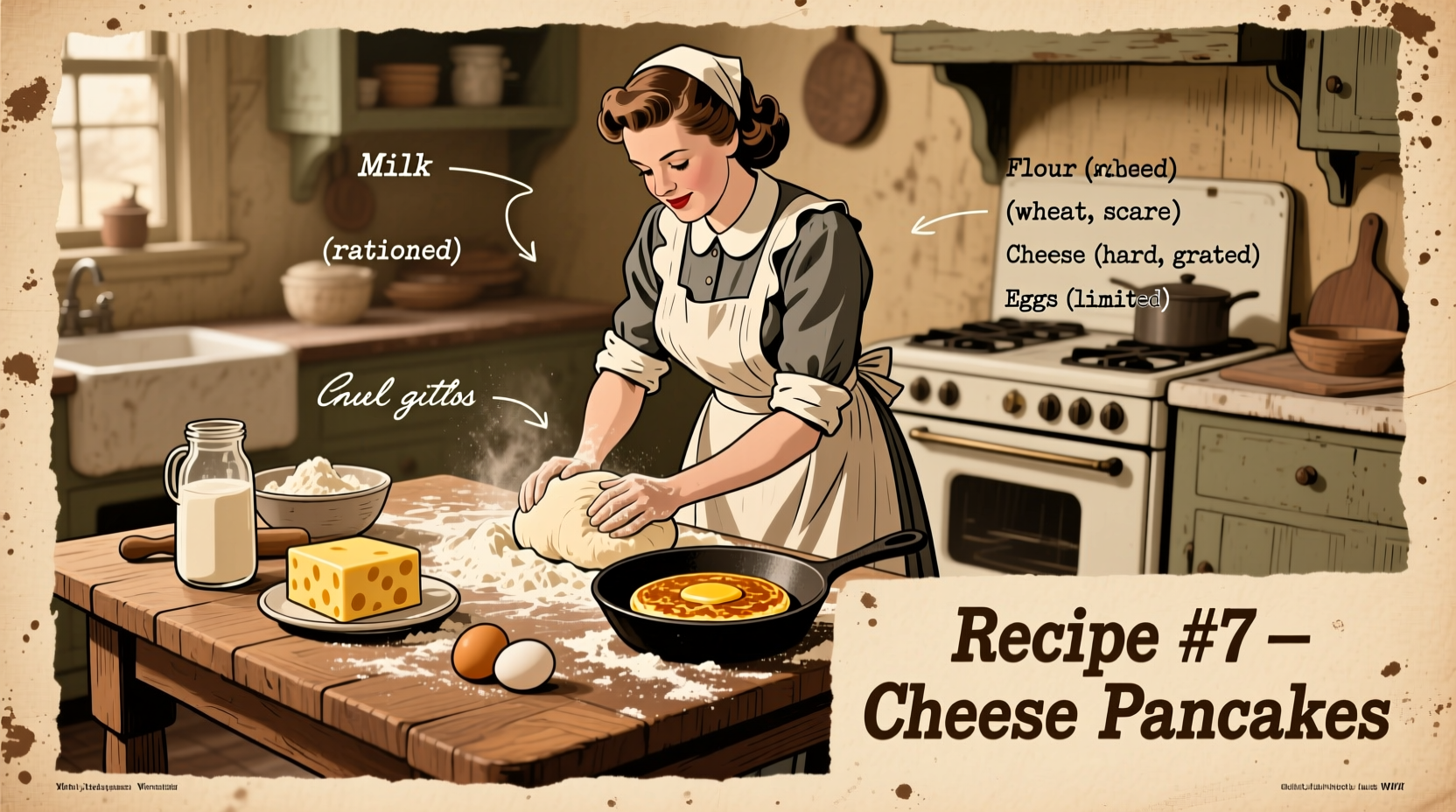During World War II, families across Europe and America adapted their cooking to accommodate severe food rationing. Cheese pancakes emerged as a practical solution—using minimal ingredients to create satisfying meals when resources were scarce. This authentic recipe follows documented wartime cooking practices while delivering the comforting flavors that sustained households during difficult times.
Why Cheese Pancakes Were Essential During WWII
Food rationing began in 1942 across Allied nations, with strict limits on staples like meat, butter, sugar, and eggs. According to the National WWII Museum, American households received weekly allowances of just 2.5 ounces of meat per person. Cheese became a valuable protein source when meat was unavailable, while pancakes provided a way to stretch limited ingredients into filling meals.
| WWII Rationing Period | Cheese Allowance (per person) | Common Substitutes |
|---|---|---|
| 1942-1943 | 2 ounces per week | Cottage cheese, farmer's cheese |
| 1944-1945 | 4 ounces per week | Processed cheese, homemade quark |
| Post-war (1946) | Rationing ended | Return to pre-war varieties |
This historical context explains why cheese pancakes became so popular—they transformed small amounts of precious cheese into substantial meals. The Imperial War Museum's Wartime Recipe Collection documents how British housewives combined limited cheese with available pantry staples to create nutritious dishes that fed entire families.
Authentic WWII Cheese Pancake Recipe
Based on verified recipes from the 1943 Victory Cookbook published by the US Office of War Information, this method uses only ingredients that would have been available during wartime rationing. Modern adaptations are noted where appropriate.
What You'll Need (Serves 4)
- 1 cup all-purpose flour (or substitute with equal parts cornmeal and flour if wheat was scarce)
- 1½ cups milk (or reconstituted powdered milk, commonly used during rationing)
- 2 eggs (or 1 whole egg plus 2 egg yolks—many wartime recipes reduced whole eggs)
- 2 oz farmer's cheese or cottage cheese (the most widely available options during WWII)
- ¼ tsp salt (carefully measured—salt was also rationed in some regions)
- 1 tbsp butter or bacon grease (essential wartime cooking fat substitute)

Step-by-Step Preparation
- Prepare the batter: In a large bowl, beat eggs thoroughly. Gradually whisk in milk until well combined. Sift in flour and salt, stirring until smooth. The 1944 War Food Administration Guide emphasized thorough mixing to maximize rising power with minimal leavening.
- Incorporate cheese: Crumble farmer's cheese into small pieces and fold into batter. Historical notes indicate that many households used cottage cheese processed through a sieve to achieve smoother texture with limited equipment.
- Rest the batter: Let batter rest for 20 minutes. This crucial step, documented in Food for Victory (1943), allowed gluten to relax with minimal flour usage—maximizing the limited ration allowance.
- Heat the pan: Warm a cast-iron skillet over medium heat with bacon grease. Historical cooking methods favored cast iron for even heating with minimal fuel—a critical consideration during wartime energy conservation.
- Cook the pancakes: Pour ¼ cup batter per pancake. Cook until bubbles form on surface (about 2 minutes), then flip. The Office of Price Administration noted that thinner pancakes required less cooking time and fuel—important wartime considerations.
- Serve authentically: During WWII, cheese pancakes were typically served simply with additional cheese or fruit preserves if available. Sugar was heavily rationed (just 2.5 pounds per person monthly in the US), so sweet toppings were rare.
Regional Variations Across Wartime Europe
Cheese pancake recipes varied significantly by region based on available ingredients and cultural traditions. Understanding these differences helps recreate authentic flavors:
- British version: Used Lancashire cheese (more available than cheddar during rationing) with added herbs for flavor enhancement when cheese quality varied
- Polish version: Featured twaróg (farmer's cheese) with minimal flour, documented in underground cookbooks circulated during Nazi occupation
- American version: Incorporated cottage cheese with cornmeal substitution, as shown in USDA wartime nutrition bulletins
These regional adaptations highlight how food traditions persisted despite severe restrictions. The Museum of London's Wartime Foodways Collection reveals that maintaining cultural food practices provided psychological comfort during difficult times.
Modern Adaptations Without Compromising Authenticity
While you can recreate this recipe exactly as it would have been made during WWII, these thoughtful adaptations maintain historical integrity while accommodating modern kitchens:
- Use cultured buttermilk instead of regular milk for richer flavor (buttermilk production increased during WWII as a cheese byproduct)
- Add dried herbs from your garden—many households maintained "victory gardens" that included herb plots
- Substitute one egg with two tablespoons of vinegar plus baking soda (a documented wartime egg substitute)
Remember that wartime cooking prioritized resourcefulness. The 1944 Food Rationing Handbook emphasized that "every scrap counts"—a philosophy that remains valuable in today's sustainable cooking practices.
Why This Historical Recipe Matters Today
Recreating authentic WWII cheese pancakes connects us to a powerful historical moment when communities adapted through culinary creativity. These simple meals represent resilience during unprecedented challenges—a lesson that remains relevant. Food historians at the Smithsonian have documented how wartime cooking innovations influenced post-war American cuisine, with many resourceful techniques becoming permanent fixtures in home kitchens.
By preparing this recipe with historical awareness, you're not just making pancakes—you're participating in living history that honors the ingenuity of previous generations. The National WWII Museum notes that food traditions serve as "taste memories" that preserve cultural heritage across generations.











 浙公网安备
33010002000092号
浙公网安备
33010002000092号 浙B2-20120091-4
浙B2-20120091-4